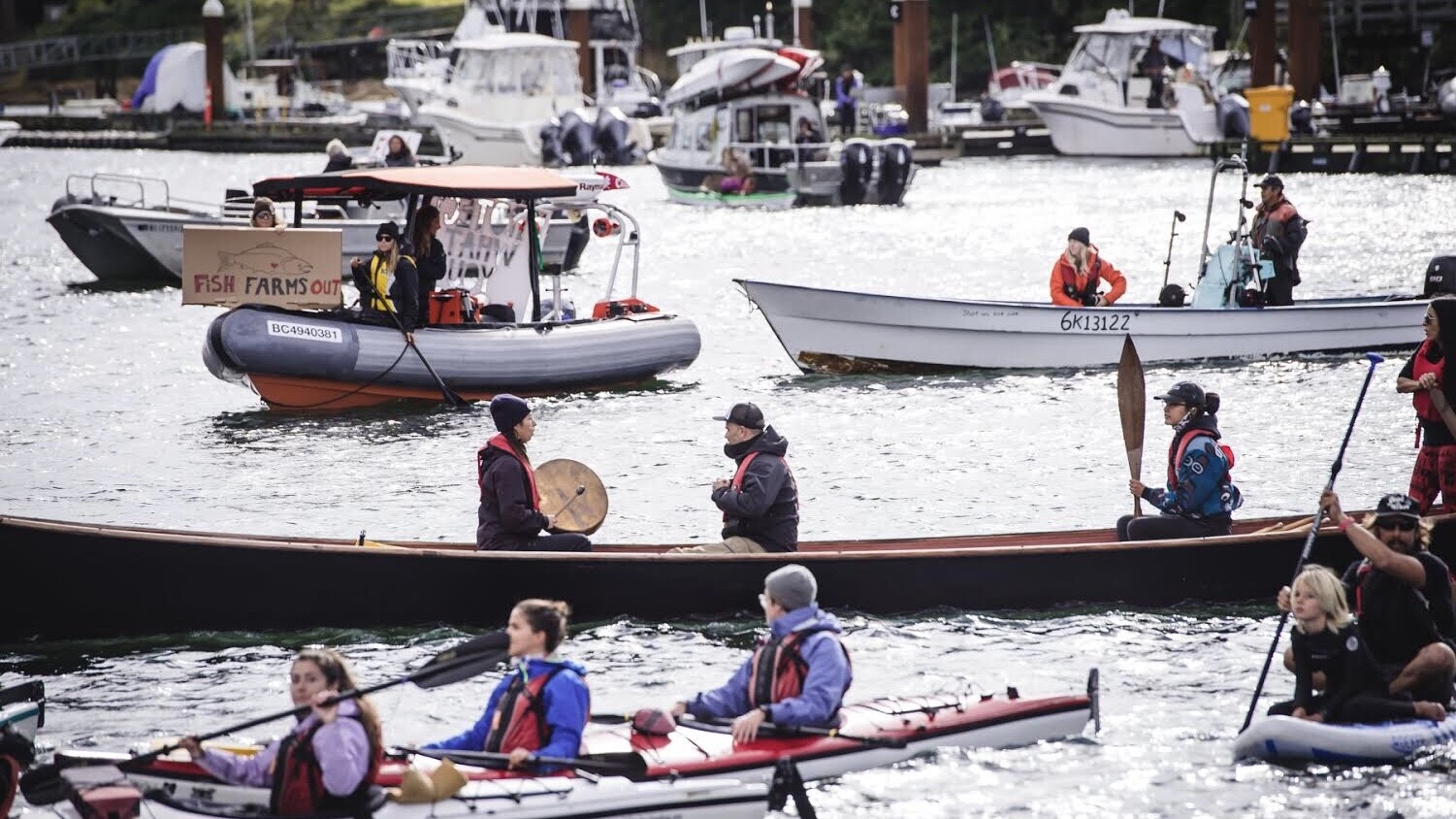
The Nuuchahnulth Salmon Alliance led a wild salmon solidarity flotilla on Saturday, September 26 in the Tofino/Nachiks harbour. Here Tsimka Martin speaks to the flotilla about the September 30, 2020 deadline for recommendations from the Cohen commission to be implemented.Photo by Marnie Recker @marniereckerphoto
Independent biologists have proven the risk posed by salmon farms impacts migrating wild salmon. In 2020, axreas where salmon farms exceeded the Department of Fisheries and Oceans’ (DFO) sea lice limits include Clayoquot Sound (72% infected), Nootka Sound (87% infected) and Discovery Islands (94% infected). Sea lice outbreaks on salmon farms this spring resulted in unnatural infestations on outmigrating smolts,
- particularly in the Discovery Islands:
- 99% of sockeye salmon were infected with an average of 9 lice per fish;
90% of pink and chum salmon were infected with an average of 5 lice per fish.
Infestations at these levels are lethal and no regulatory or therapeutic measure employed by the Department of Fisheries and Oceans (DFO) or the salmon farming industry have been effective to control sea lice. This is not surprising as no salmon farming region in the world has been able to control sea lice. No other salmon farming region in the world still has commercially viable stocks of wild salmonids, either.
The Canadian government already promised to act upon the recommendations of the 2012 Cohen Commission of Inquiry into the Decline of Sockeye Salmon in the Fraser River. One of the recommendations of the Cohen Commission outlined the removal of 18 salmon farms in the Discovery Islands by Sept 30 2020. The $30 million dollar Cohen inquiry also recommended that the Department of Fisheries and Oceans resolve the conflict of interest of DFO’s current mandate of managing wild salmon conservation while simultaneously promoting and regulating the salmon farming industry.
